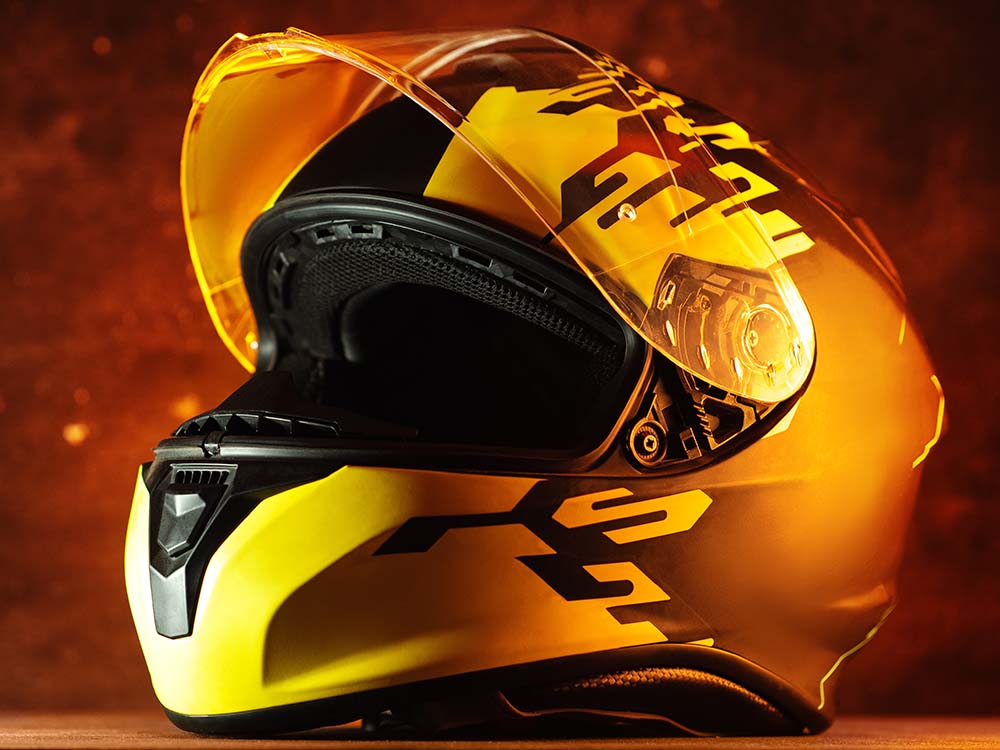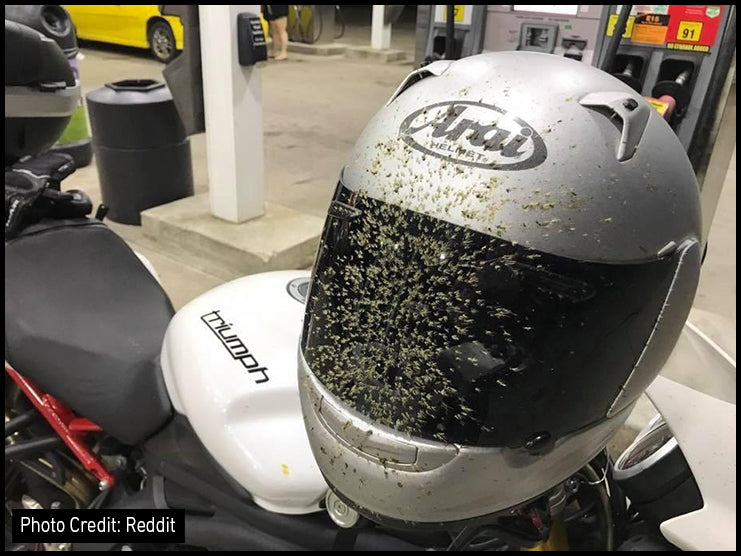Table of Content
Your helmet is not only an accessory that makes you look cool, it is your protection gear that saves your life. Some riders may find it a burden to wear and carry. They are unaware of the life-threatening risks involved in riding a motorcycle without a helmet.
If you for any reason cannot stand wearing a helmet, let me remind you that there is a huge difference between a bad hair day and a life-threatening head injury. A certified DOT-approved helmet is your guardian angel as it not only protects your head, it is a life savior.
If you consider yourself a biker, choosing a helmet that corresponds to the Department of Transport (DOT) requirements is important. But here's the thing: even though a sticker reads DOT on your helmet, it doesn’t necessarily mean that it is legit. This article goes a step further to help you understand how to verify the legitimacy of your DOT-approved helmet, to give you the best defense on the road.
1. Decoding the DOT Sticker

The DOT sticker may look just like a simple sticker to most riders but it is an indicator of the validity of your DOT-approved helmet. Let's break down what each element on the label tells you:
1.1 FMVSS No. 218
The FMVSS No. 218 is not just a random number. This figure on the DOT sticker means that the helmet has been tested for compliance with FMVSS No. 218, which outlines a series of tests that the helmet must pass. These tests cover:
Impact Absorption
Imagine a situation where you accidentally drop your helmet from a certain height. The DOT standard determines the amount of force that the helmet is capable of withstanding without transferring to the head.
Penetration Resistance
This test determines whether the shell of the helmet can withstand an impact from a sharp object or if the said object will be able to penetrate and hit the head of the wearer.
Retention System Strength
This is the test to ensure that the DOT-approved helmet must remain attached to the rider’s head throughout an accident. The DOT standard also ensures that the chin strap as well as the retention system are firm enough to hold your head firmly in place in the event of an impact.
1.2 Manufacturer/Brand
The following part tells you the name of the company that produced your helmet. This information is beneficial because one can use it to evaluate the brand’s established safety innovation and quality assurance. The established helmet manufacturers in the market that have been in the production of safe helmets for some time now offer more reassurance.
1.3 Model Designation: Not All Helmets Are Created Equal
Within the same brand, there are helmet models that are different in terms of features, design, and protection capabilities. The designation on the product label shows the model that you own. This is important because some models are equipped with extra options or may have a higher ranking in some aspects than the rest of the models produced by the same helmet manufacturer.
1.4 The Word "CERTIFIED": The Stamp of Approval
This is the clear statement that indicates that your helmet has cleared all the safety tests prescribed by the DOT. It is the DOT compliance stamp that verifies that your helmet is safe to use and complies with the issued standards. The DOT sticker is important enough that even if you have a slight doubt about the sticker’s authenticity, you should get it replaced. Don't risk it.
2. Beware of Imitators: Spotting a Fake DOT Sticker
Motorcycle helmet users need to understand that modern-day fraudsters are quite deceitful. Here's how you can spot a fake DOT sticker and helmet:
2.1 Scrutinize the Label
A real DOT label is a piece of work that is of high quality. The writing on the logo should be easily distinguishable and sharp while the background should be neat and professional. The fake label may be blurred, low contrast, or of a very low quality compared to the original. Remember to examine the font or space between the letters to see if there are any gaps or variations. You can do it by comparing it with a genuine and verified DOT sticker.
2.2 The Weight Test
The tested and DOT-approved helmets are manufactured using strong materials that can easily survive the impact. This leads to the fact that its weight is approximately around 3 lbs . If your helmet feels somehow cheap or even if they are suspiciously light, you may have a fake low-standard helmet. A fake DOT-approved helmet will weigh around 1 lb or less .
2.3 Consider Additional Certifications

The DOT standard is a mandatory safety standard certifying that the safety requirements are met. Some helmets are not only limited to meeting DOT standards but are also approved by other third-party test laboratories such as the Snell Memorial Foundation . The Department of Transportation has stringent testing policies, but these organizations have additional rigorous testing standards. However, it is always encouraging to see extra certifications, meaning an extra degree of protection to the rider.
3. When the DOT Sticker Isn't Enough: Reasons to Consider a New Helmet
There are circumstances when a helmet with a shiny DOT sticker does not necessarily provide guaranteed protection. Here's why you shouldn't solely rely on the sticker and consider replacing your helmet in certain situations:
3.1 The Shadowy Past of Second-Hand Helmets
When opting for a used helmet, you must be familiar with its history and how it has been used throughout its life. You may not know how many other riders have used the second-hand helmet before or whether it has been involved in accidents or not.
Also Read: WHEN IS A MOTORCYCLE HELMET TOO OLD?
Dropped
If you don’t know, this fact may surprise you. Getting dropped even from a small height can affect the helmet’s overall structural integrity and can compromise its safety abilities. The impact can cause fine cracks on the surface or it can also damage the EPS (Expanded Polystyrene) liner, the essential foam layer to absorb the impact energy. These hidden cracks and damages may not be as obvious but they can negatively affect the efficiency of the helmet in the event of an accident.
Also Read: DOES DROPPING A MOTORCYCLE HELMET RUIN IT?
Involved in an Accident
Though head gears are designed to protect your head in an accident by not letting the impact reach your head, they can only take an impact once in their life. An accident damages the structure of the helmet and diminishes its protective abilities. So, if a helmet has been involved in an accident, it is useless for further use. It is possible that the liner could have been compressed or twisted and the shell could have been damaged.
Remember : To ensure the best safety standards, there is no need to take chances and compromise your safety with a second-hand or damaged helmet.
3.2 Unfamiliar Brands: Do Your Research Before You Ride


Helmets that are not manufactured by widely known brands should be researched before you buy them to avoid dangerous consequences. Here's what to consider:
Established Reputation
Only buy those head safety products that have safety features incorporated into the design and conform to DOT safety regulations. These companies most often spend a lot of money on the research and development of new products and use the best materials available, making the helmets more effective.
Third-Party Certifications
Although the DOT approval is a must and it ensures a minimum safety standard, some manufacturers extend their efforts to undergo tests from other organizations which has even higher standards than the DOT. These additional certifications are an indication that these helmets are designed with the best safety standards in mind.
Research is Key
There are many online resources and forums where you can find reviews of helmets by trusted motorcycle publications and safety organizations. Make sure to consider these reviews before buying a helmet. It is good to check the manufacturer’s history, the manufacturing and testing processes it uses, and the safety features of the helmet.
4. Takeaway
Buying a DOT-certified helmet is a good investment. Don’t shy away even if you have to spend some extra dollars to acquire a new DOT-certified helmet. It is important not to forget that sometimes the little extra money spent for safety can save you from serious repercussions in the future.
Helmet safety is a dynamic area that is subject to changes from time to time. DOT standards and testing procedures are updated quite often to make sure they are streamlined with the latest technological advancements in the field. To ensure you are familiar with the most up-to-date safety standards and information, visit the National Highway Traffic Safety Administration (NHTSA) website.
Ride sensibly, ride smart, know your limits, and always remember that your helmet is your guardian angel that is keeping you safe while riding.
Besides safety, the other most important thing is ride comfort. If you love to travel long miles on your motorcycle, you must be comfortable to ensure you ride safely. Viking Bags can help you make your riding experience plush so you can enjoy more on the two wheels. The company produces the best-quality sissy bars , backrests , crash bars , and fairings to install on your bike. You can also choose to buy the best-suited motorcycle luggage bags , including saddlebags , tank bags , backpacks , and numerous other options for your particular make and model.












Leave a comment
All comments are moderated before being published.
This site is protected by hCaptcha and the hCaptcha Privacy Policy and Terms of Service apply.